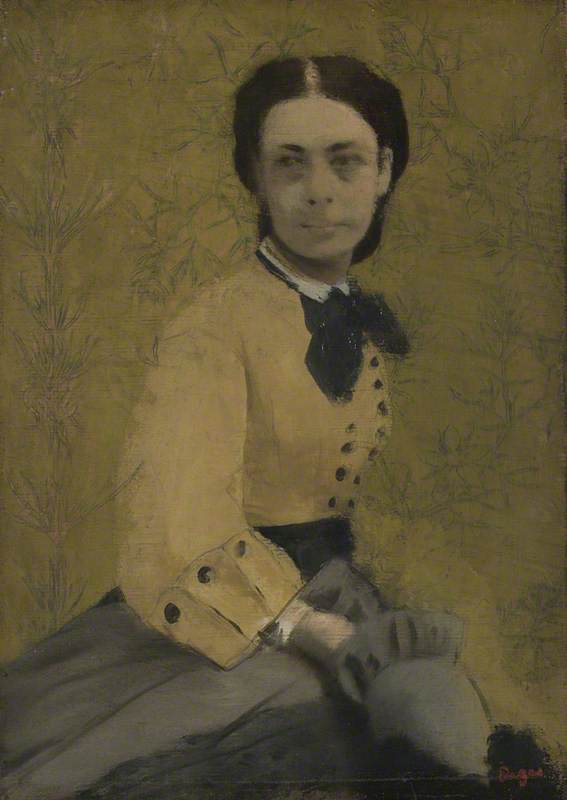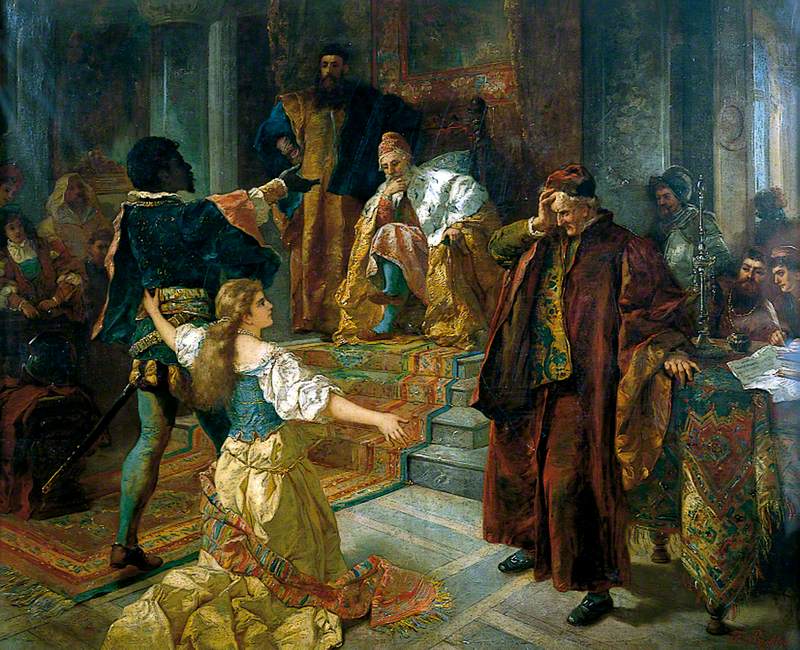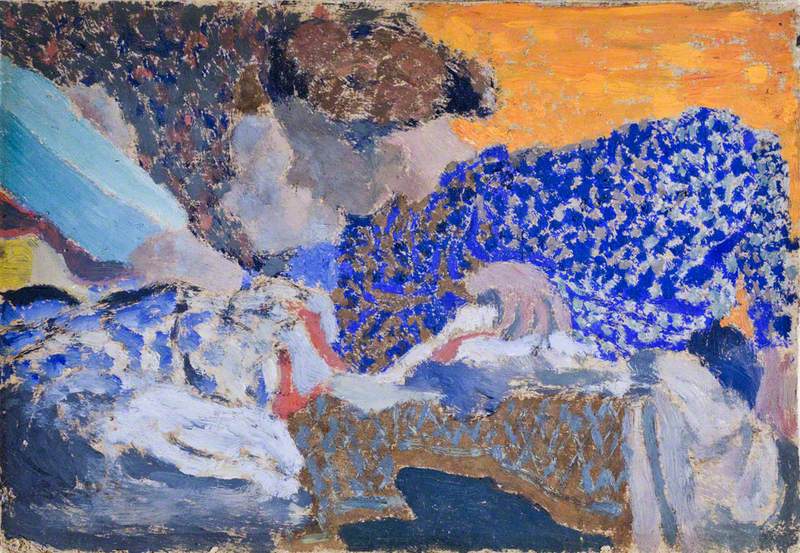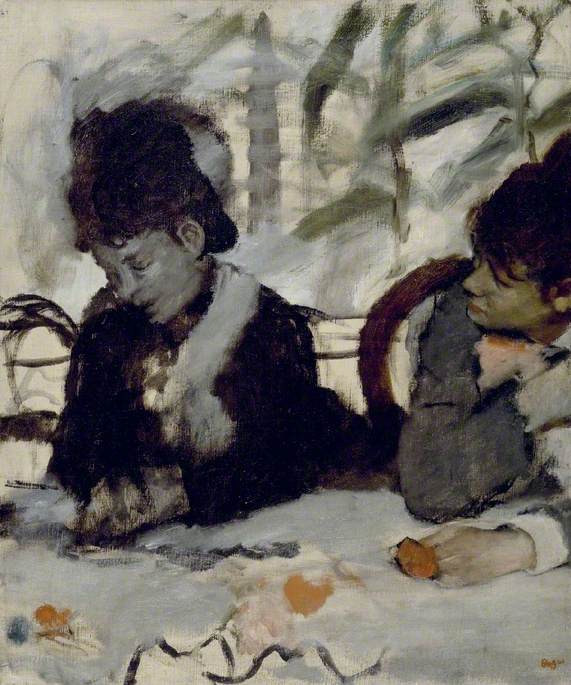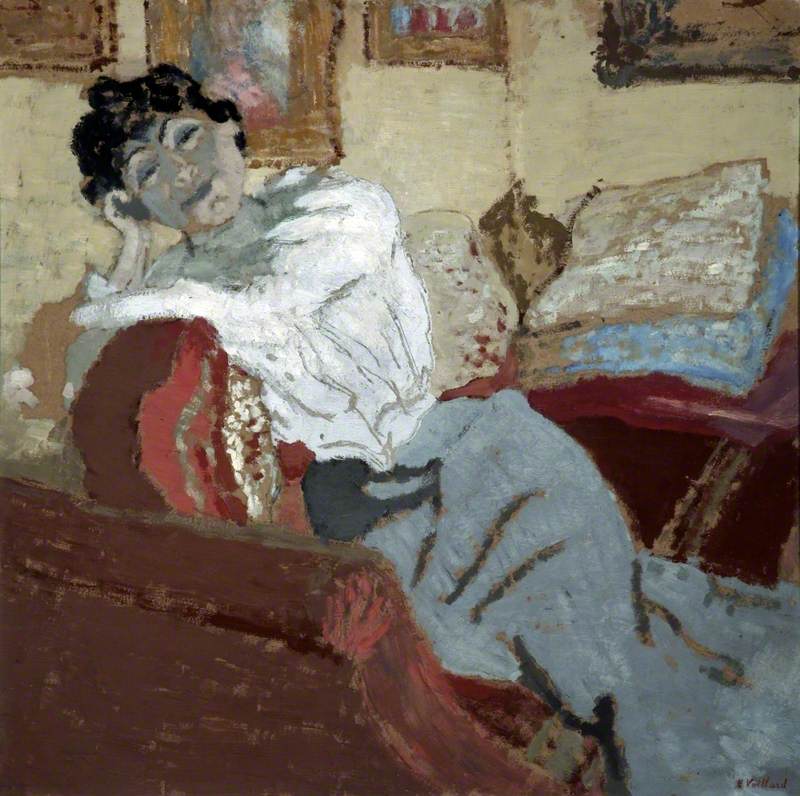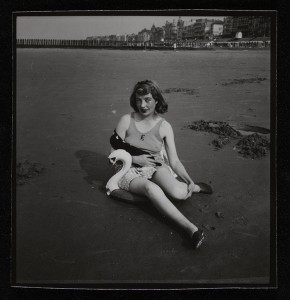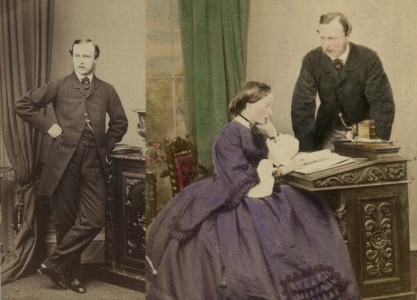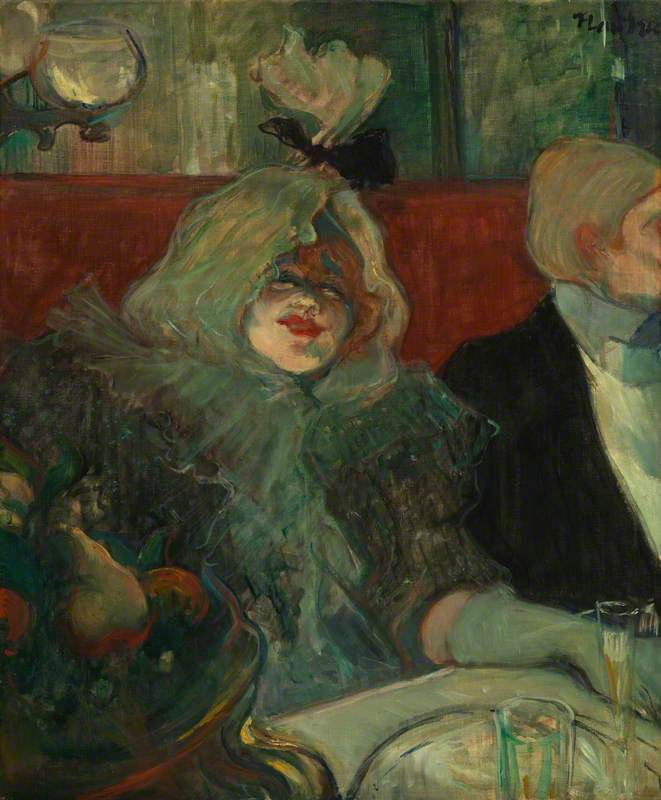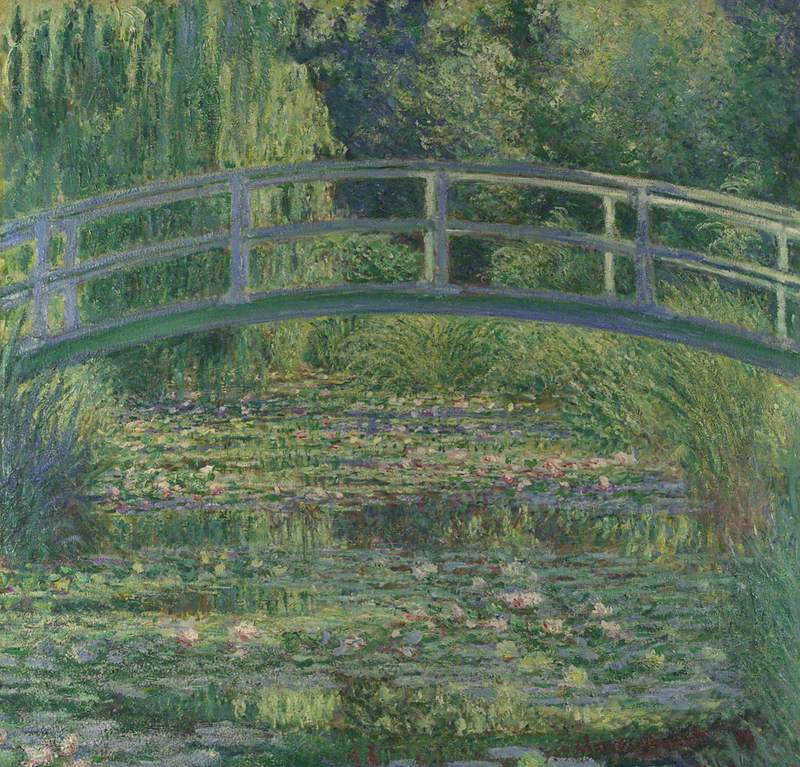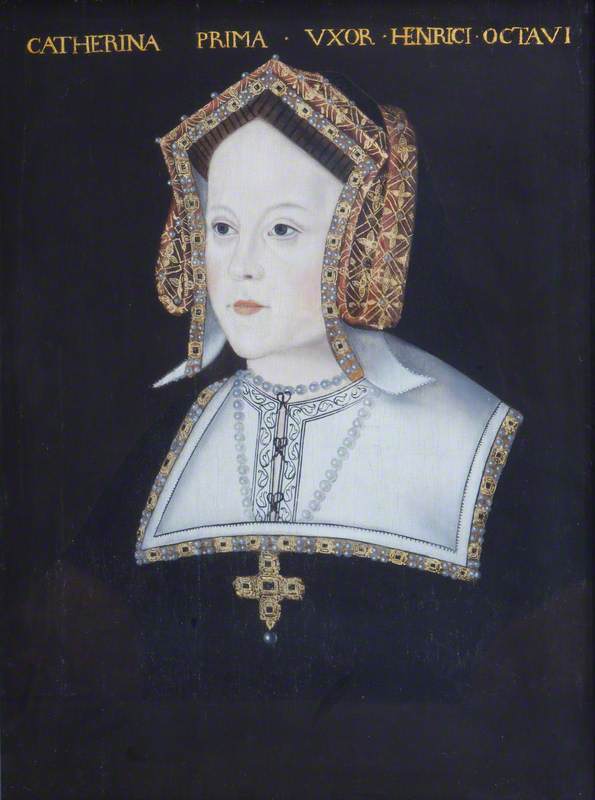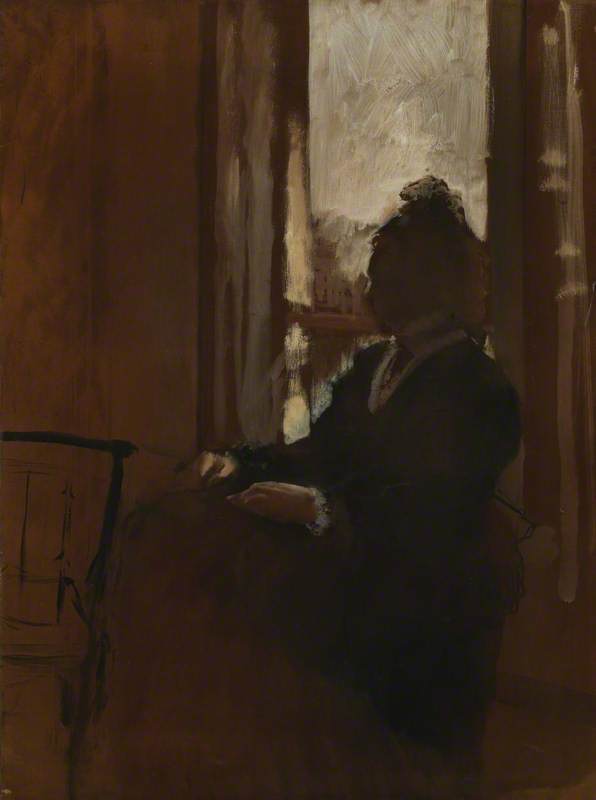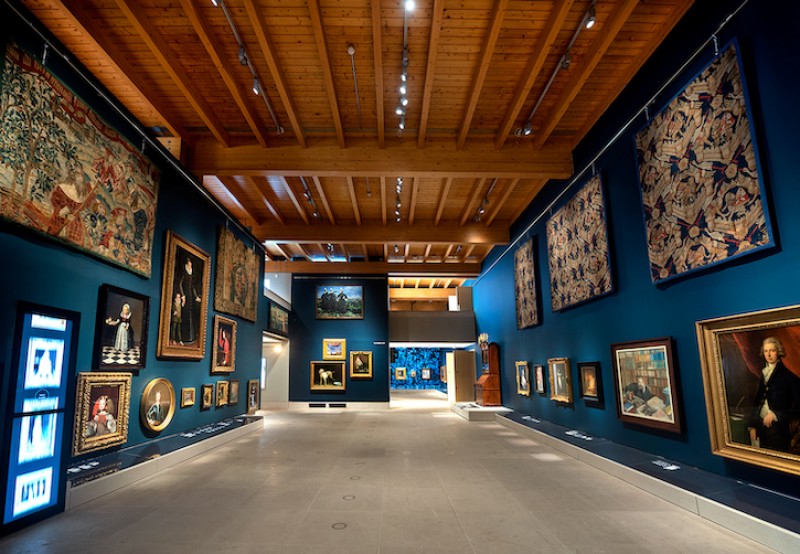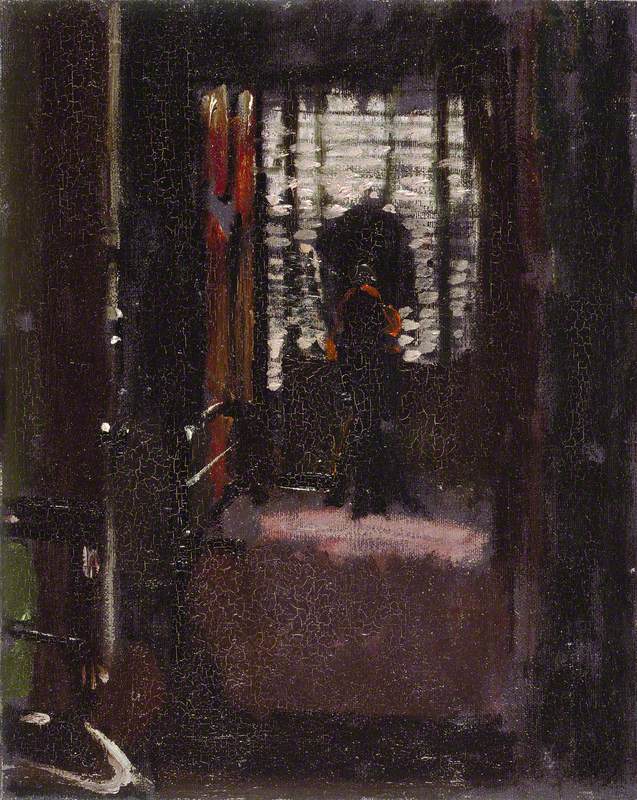A woman in a military-style buff jacket with distinctive, wide,
What might be a wide, large black net shawl of some description, with a simple pattern of large black spots worked into its gauze, is draped across her skirt fronts. Since the skirt is cropped one can only deduce the length, width, or even purpose of this delicate stuff. The woman’s black hair is simply and elegantly dressed, evidently by a maid, for from the quality and stylishness of her garments, the woman is upper class. Her thick black hair, which appears to be her own, is centrally and severely parted and pulled back in wings over her ears, then coiled in thick braids in a low chignon on the back of her head and down to her nape, perhaps smoothed with a fine net. The style sets off her sallow skin, pale lips and shadowed eyes in a bold and striking face.
But even though the painting, done by a young male painter of a beautiful younger woman, is fairly faithful to the photo it was based on, all is not precisely as it seems.
The woman holds an unusual item that is difficult to identify but which appears to be a type of poke bonnet with a gentle flounce to frame the face, enlivened with puffs of unidentifiable plumage at the back, with long wide black silk ribbons to tie it under the chin in a dashing bow, probably knotted to one side. While it is likely that this is what it is, the curious way it has been painted indicates that the painter is not completely certain of its structure or actual shape when worn. The flourish of his signature, appearing almost as two jaunty smaller red bows on the bonnet, adds by far the brightest
An inspection of the jacket, of the
The woman wears no
The French painter’s name was Edgar Degas, born 1834; and the Hungarian sitter’s name Princess Pauline von Metternich, born two years later in Vienna in 1836. These are known facts. As is the approximate date of the painting, around 1865; and that it is closely based on a photograph of Pauline and her husband, who was also her uncle, Richard Metternich, Austrian Ambassador to Paris during the Second Empire. The photograph was taken by society photographer André Disdéri, in 1864.
But even though the painting, done by a young male painter of a beautiful younger woman, is fairly faithful to the photo it was based on, all is not precisely as it seems.
Degas had met Manet in 1862, and the impressionist quality of his fast but light and sure brushwork; his handling and simplifying of the subject, are evident.
Pauline von Metternich was born Countess Sandor von Slavnicza. Aristocratic Pauline did not consider herself beautiful, as her memoir makes clear; but she liked smoking cigars and was intelligent and lively in
And the outfit Pauline wears in Degas’s painting was also designed by Worth, who became the princess’s
One sees in those pictures that, to echo the cuffs, the skirts had a bold, unusual and deep border of about 30 cm in a motif that resembles piano keys. A dark waist ribbon, tied at
She was about 28; Degas 30; and both of them dark and broodingly handsome.
But in the version Degas worked from, which is probably but not necessarily from the same session, Pauline stood with her husband, her left arm hooked into his elbow. That version shows what is evidently her shawl draped over the skirt of her dress, perhaps a sudden inspiration by the photographer, perhaps by the princess. One also sees that the shawl has a much more complex pattern woven into it, of sheer paisley motifs. Degas therefore deliberately simplified it into large spots for his painting. One sees too that her neck bow was actually a tartan or tarlatan pattern, which again, Degas simplified to plain black. And his decision to turn her dress into a two-piece outfit of skirt and
The
Perhaps it was having some knowledge of the princess that gave this fast, sketchy painting its immediacy and vividness.
An intensely fashionable and ultra-modern woman of mysterious appeal with a beautiful figure. A worthy heroine in a novel by rising young literary comet Zola, perhaps. She was about 28; Degas 30; and both of them dark and broodingly handsome. Why did Degas take Pauline’s husband out of the composition entirely, and sketch and paint this lovely woman on her own, with such attentive
Philippa Stockley, author, award-winning journalist, and exhibiting painter
